A genus of coniferous trees in the plant family Pinaceae. They are native to the mountains of the western Himalayas and the Mediterranean region, occurring at altitudes of 1,500 – 3,200m in the Himalayas and 1,000 – 2,200m in the Mediterranean region.
Cedrus trees can grow up to 30 – 40 m tall with spicy-resinous scented wood, thick ridged or square-cracked bark, and broad, level branches. The shoots are dimorphic, with long shoots, which form the framework of the branches, and short shoots with most of the leaves/needles. The leaves are evergreen and needle-like, 8 - 60 mm long, arranged in an open spiral on long shoots, and in dense spiral clusters of 15 – 45, together on short shoots; they vary from bright grass-green to dark green to strongly glaucous pale blue-green. The seed cones are barrel-shaped, 6 – 12 cm long and 3 – 8 cm broad, green maturing to grey-brown; they disintegrate at maturity to release the winged seeds. The seeds are 10 – 15 mm long, the seeds have two or three resin blisters, containing an unpleasant-tasting resin, thought to be a defence against squirrels. Cones take one year to mature.
Cedars as Bonsai
- Many species of cedar trees are suitable for training as bonsai. They work well with many styles, including formal and informal upright, slanting, cascading as well as groups but styles that require severe bending of the main trunk are less successful frequently suffering breakages in bending.
- Although cedar is technically a soft wood it has a very dense internal structure that requires steam before bending in furniture manufacture and steaming live wood as in bonsai is not recommended thus you do not see cedar bonsai in highly contorted styles.
- When styling and shaping cedars be sure to trim back shoots either using fingers or fine sharp scissors; do not cut through needles as they will very likely die back leaving you with dead tips to your branches.
- If subjected to any kind of stress e.g. drying out, severe winds or sudden temperature changes, these trees will suffer needle drop. Do not be too alarmed. Following the yellowing of the old needles, new needle “buds” can develop even before the dead needles have dropped. New needles then develop over a 10 to 14 day period.
- If you are considering air layering to get lower branches, and it is frequently attempted, remember they are very slow to root, thus so many are grafted, but you do need to be very patient; it can often take into a second season before you have worthwhile results. It took 2 years to get there but it did happen in the end (see image below).
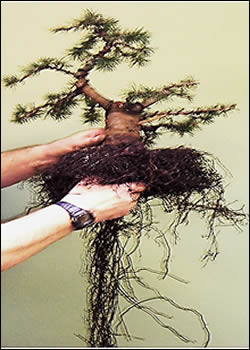
- Wiring and training; they frequently produce new long thin branches; do not be too quickly tempted to cut them back - often a long slender branch with few side-shoots can appear wider, fuller and much shorter by wiring along its length and then snaking to compress it.
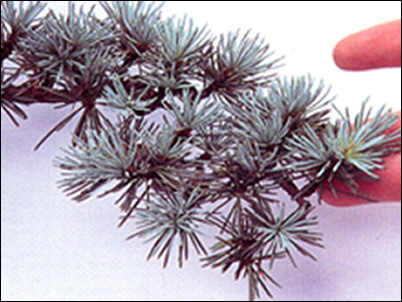
- Similarly a new apex can be created by cutting off the top of the tree revealing the pruning scar; then strategic wiring and bending disguises the pruning scar, giving a rapid and developed apex.
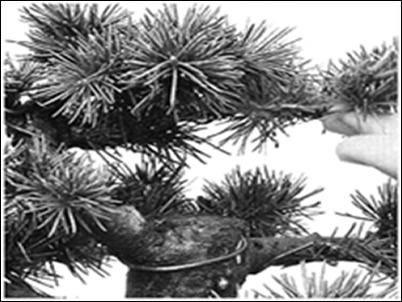
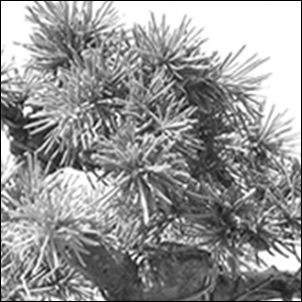
The varieties of Cedrus are:-
Cedrus atlantica: Atlas cedar, native to Atlas Mountains in Morocco and Algeria
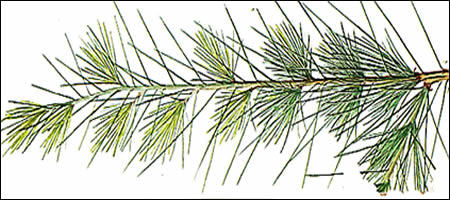
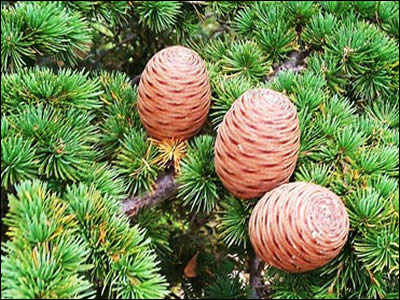
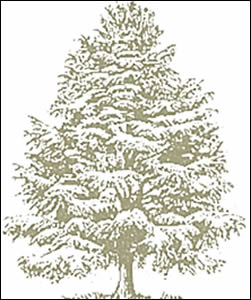
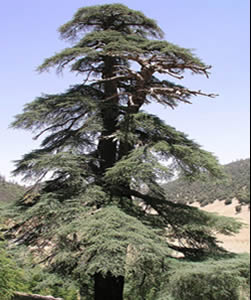
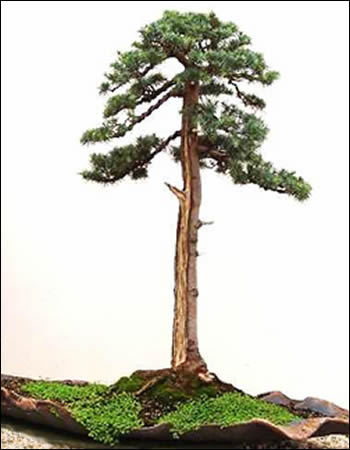
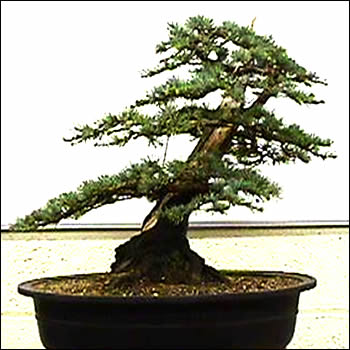
Atlantic Cedar as Bonsai
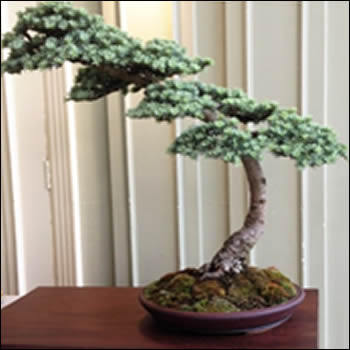
Cedrus brevifolia: Cyprus cedar, native to the mountains of Cyprus
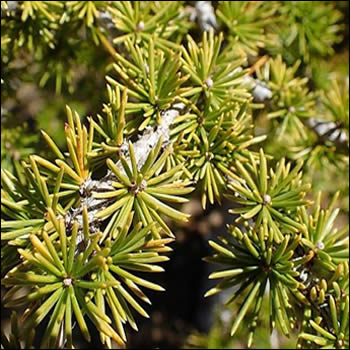
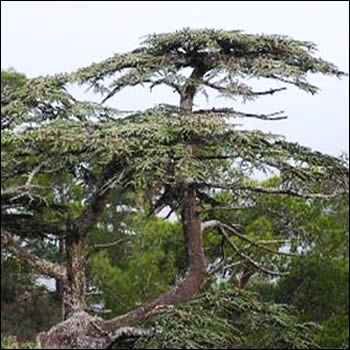
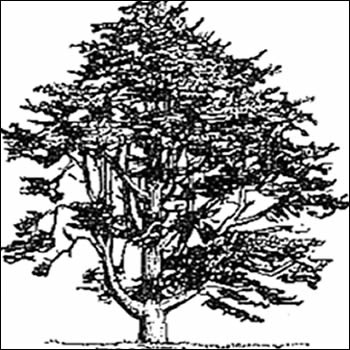
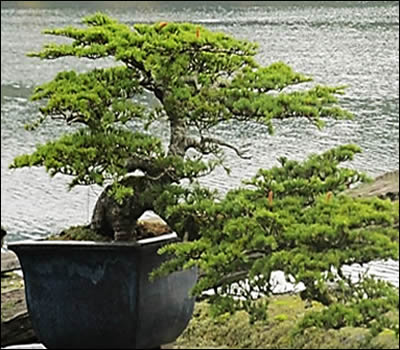
Cedrus Brevifolia as bonsai
Cedrus deodara: deodara cedar, native to the Western Himalayas
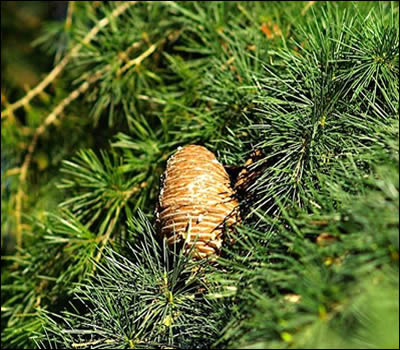
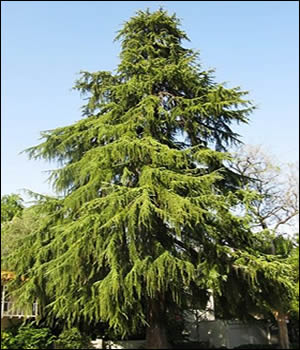
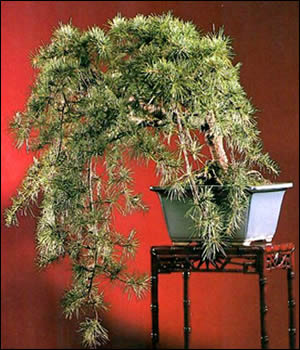
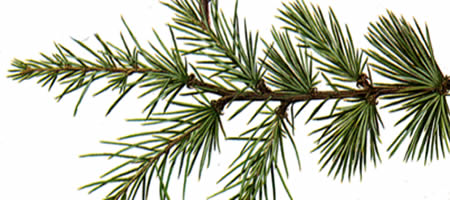
Foliage of C. deodara
Cedrus libani: – Cedar of Lebanon, native to Mediterranean region mountains in Near East and Turkey,
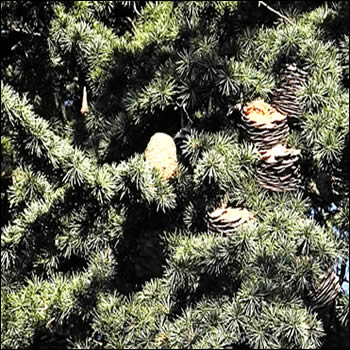
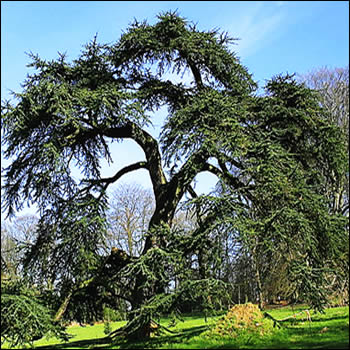
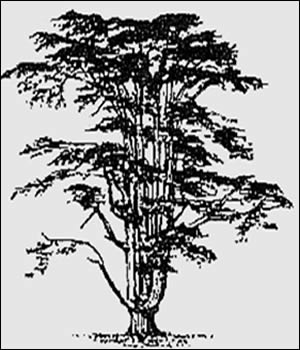
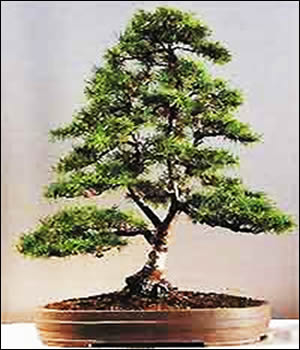
Cedrus lebani as bonsai